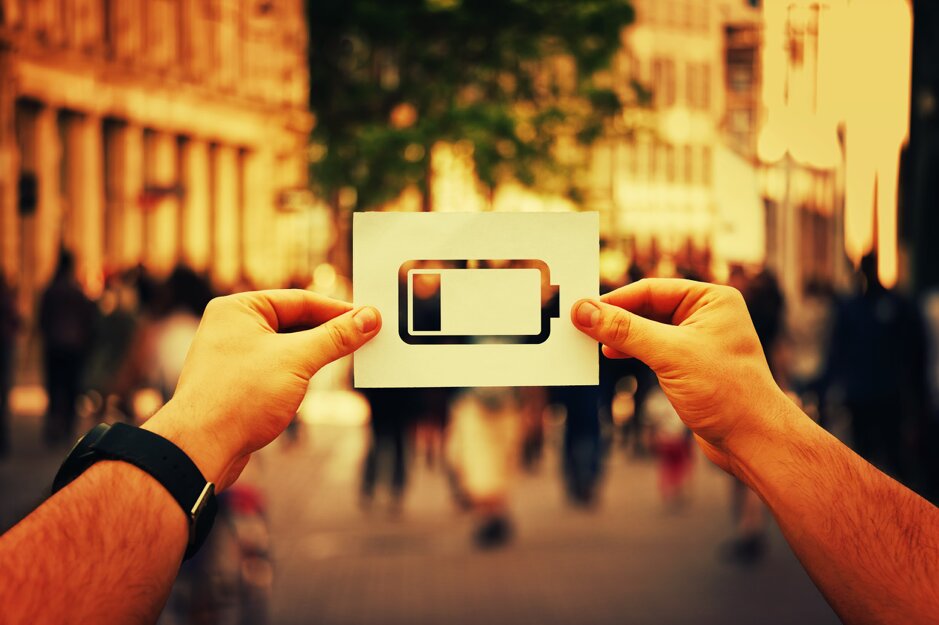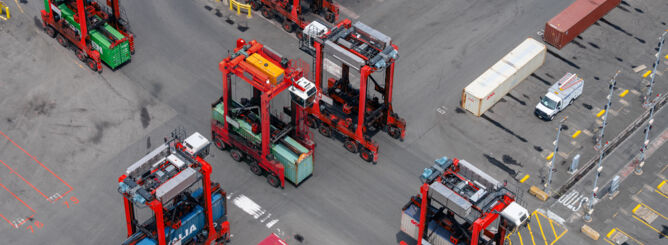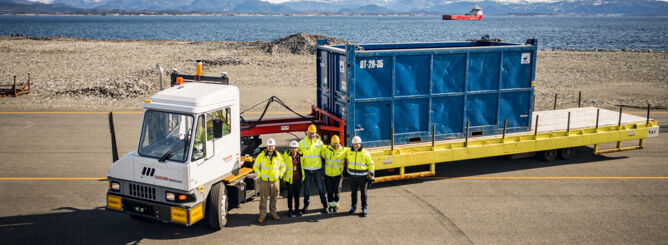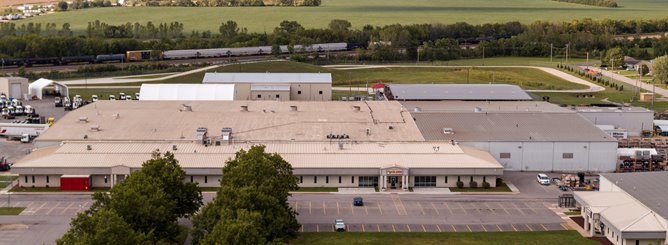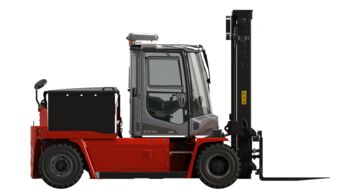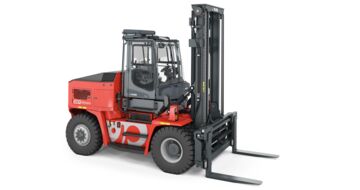Li-ion batteries have a great upside even with second-life issues still requiring solutions
Lithium-ion battery technology brings many benefits for cargo handling equipment, but what do we do with them at the end of their lifecycle?
In the past, mobile equipment such as forklifts have relied on lead acid batteries as their power source. At Kalmar, the shift to lithium-ion battery technology started roughly 10 years ago from hybrid straddle carriers and RTGs. Over the past five years the focus of product development has shifted towards generally utilising lithium-ion technology.
“This is a field undergoing rapid development, and under the Li-ion umbrella there’s a family of solutions, and new chemistries are being introduced over time. I’m convinced Li-ion is the way to the future even though we still have more work ahead of us,” says Peter Söderberg, VP R&D at Kalmar Mobile Solutions.
“In the Straddle Carrier business, we use only Li-ion batteries and the battery system is completely designed in-house to be sure that it fits the demanding application. In the forklift business, lead acid technology was widely used even before the era of novel Li-ion technologies,” says Mikko Nurmela, R&D Manager, Electrics at Intelligent Horizontal Transportation Solutions at Kalmar.
Even though there is a clear drive toward electric vehicles, the field is still fairly young, at least regarding lithium-ion batteries. Also, the current batteries are so good that we haven’t reached the end of their first life use.
“I recently read about a taxi driver who used a Tesla for his work. He had 700,000 kilometres on the odometer, only the last 100,000 on a new battery. He drove 600,000km with the first one. This example shows why I wouldn’t be very concerned with the battery life cycles,” says Nurmela.
“The batteries easily last a decade and we’ve used the first-generation batteries for five, six years now,” he adds.
Second life issues yet to be solved
However, the switch to electric vehicles is well on its way – Kalmar has sold approximately 300 hybrid straddle carriers – and the need for plans for how to manage the batteries’ at the end of their life cycle is becoming increasingly important. Regardless of the finest technology, no battery lasts forever.
“The lead acid batteries age a bit faster than Li-ion batteries, depending on cycles, of course. At the moment, recycling of lead acid batteries is much easier than Li-ion batteries. Raw materials like lead and plastics are quite easy to separate in the recycling process,” Nurmela explains.
“Recycling of Li-ion is possible, but will happen on a large and more economical scale once the industry gets enough batteries to be recycled,” he adds.
Battery manufacturers aren't asleep at the wheel, though. According to Söderberg, awareness and interest in recycling are increasing.
“Several suppliers are serious about the lifecycle concept and some are already planning and even building a recycling facility when they build their factory. This way they will be able to track every battery so that they know when they need to be recalled,” he says.
"The second life use will most likely have some additional value for the battery system, but what that value is needs to be carefully evaluated."
Nurmela notes that there’s also an ongoing discussion about second-life use of the batteries, but the question may be more complicated than it seems at first blush. Or more accurately, there are many questions that need to be answered.
“How is the lifetime defined? What is the status of the batteries after the first life? Are there some safety risks in starting the second life use? What is the second life use and who will be responsible for it? The second life use will most likely have some additional value for the battery system, but what that value is needs to be carefully evaluated,” he says.
Systematic action is needed
Both Nurmela and Söderberg agree that it may be, if not impossible then at least difficult to reuse batteries, which leaves recycling as the only option, at least currently.
“One challenge we have is that it's difficult to use batteries that are originally from two or three applications because you don’t know how they function when put together in the same system. You can’t combine batteries from our straddle carriers, a lawn mower and a passenger car,” Nurmela emphasises.
“It may be better to recycle the materials than to re-use the batteries, although Volvo, for example, uses the batteries in buses at first, then storage solutions afterwards. But again, that works because they use one, standard battery,” adds Söderberg.
“Leading companies like us also have the opportunity to shape the market."
Since there hasn’t yet been a need for large-scale recycling of Li-ion batteries, the future of recycling is still somewhat hazy.
“It’s unclear whether any company has enough capacity to recycle large batteries, even though for example in Finland, there are clear signs that there will be facilities capable of fulfilling this need in the near future,” says Nurmela.
However, development and changes in the field are coming fast, and as we turn the corner to a new decade, we know for certain that things do change. And they change fast.
“There are many companies working on battery technologies, including recycling,” says Söderberg.
“We at Kalmar are, of course, here to assist our customers to figure out how to recycle the batteries once we reach the end of their life cycle. The challenge for Kalmar is that we have a tradition of selling our vehicles, and now we have to define our offering as a more complex system in a new way. On the other hand, leading companies like us also have the opportunity to shape the market,” he concludes.
Peter Soderberg, Vice President, Offering Development, Mobile Solutions, Kalmar
Mikko Nurmela, R&D Manager Electrics, Automated Solutions, Kalmar
 |
Peter Soderberg, Vice President, Offering Development, Mobile Solutions, Kalmar. Peter has a long history in research and development, and he has played an important role in driving the technology transformation of mobile solutions towards eco-efficiency, digitalised and automated offerings. He retired on the 31st of December 2019. |
 |
Mikko Nurmela, R&D Manager Electrics, Automated Solutions, Kalmar. Mikko is working on applied research themes like hybrid and electric power trains for cranes and mobile working machines. His specialty is batteries and other energy storage systems, electric drives and motors, including the recent development in the fast charging technology. He has 20 years of experience in engineering and technical roles as well as supporting customer projects. |
